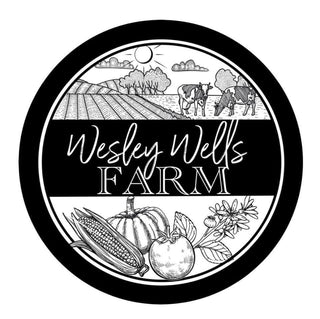
Introduction
Keeping paddocks clean is not just about appearances. It is about pasture health, horse safety, and long-term farm efficiency. A well-maintained paddock prevents mud, keeps footing secure, and protects forage from contamination. Every clean-up, whether big or small, contributes to better drainage, fewer flies, and happier horses.
Paddock Blade designs tools that make this work faster, safer, and easier. Their durable paddock cleaning equipment helps owners stay on top of daily waste removal without back strain or wasted time. By maintaining a steady cleaning routine, you can protect the health of your land and your horses through every season.
Why Clean Paddocks Matter All Year
A clean paddock supports the entire health cycle of your property. Manure left in the field releases ammonia, breeds flies, and adds parasites back into the soil. Over time, those parasites are re-ingested by grazing horses, creating a constant cycle of worms and irritation. Regular removal breaks that cycle.
Clean paddocks also reduce mud and protect grass roots from damage. When manure and mud mix, they create slick, bacteria-rich surfaces that can lead to thrush, abscesses, and respiratory irritation. By keeping surfaces clean, you reduce vet bills, support hoof health, and improve the condition of your pasture.
Seasonal care also matters. In winter, frozen waste and snowmelt create dangerous footing, while in summer, manure dries and attracts insects. Cleaning consistently prevents small problems from becoming expensive ones. Learn how Paddock Blade can revolutionise your winter maintenance with tools designed for every weather condition.
Actionable Steps for Daily and Weekly Maintenance
The best way to manage paddock hygiene is through simple, repeatable routines. Here is a practical outline that keeps your paddocks in top shape:
Daily:
-
Remove manure from turnout areas, gates, and water zones
-
Check feeders, troughs, and mats for buildup or slippery footing
-
Inspect fencing for sharp edges or loose boards
Weekly:
-
Rake high-traffic areas to prevent compaction
-
Clean hay feeders and water troughs thoroughly
-
Inspect drainage channels and fill deep ruts
Monthly:
-
Drag paddocks in dry weather to distribute manure evenly
-
Rotate turnout areas to prevent overgrazing and mud patches
-
Refill footing where needed around gates or troughs
How often should I drag a horse paddock?
Most paddocks benefit from dragging every two to four weeks during dry weather. Avoid dragging when wet, since it spreads parasites and damages soil.
For long-term planning, try using the paddock maintenance cost estimator to understand how consistent upkeep affects your budget. Composting manure is another sustainable option. Learn more on how to compost horse manure for safe disposal that supports soil health.

Must-Have Daily Cleaning Tools
Daily paddock care becomes much easier when you have the right equipment. Manual tools work best for smaller yards, while mechanical aids save time on larger properties. If you work efficiently, even a few minutes a day keeps paddocks spotless.
What tools are best for wet, muddy paddocks?
Use wide-tined forks for lifting wet waste and flat shovels for compacted mud. In bigger paddocks, the Paddock Blade glides smoothly across all surfaces, even through wet ground, collecting manure quickly without tearing grass. You can estimate your setup’s needs using the paddock cleaning calculator to find the most efficient routine for your space.
Manure Forks and Rakes
Manure forks and rakes are the foundation of paddock cleaning. Choose lightweight but durable materials such as aluminum or reinforced plastic. Flexible tines pick up manure without digging too deeply into the soil.
Do I need a harrow for a small farm?
Not always. If you clean daily, dragging may be unnecessary, but for larger areas or shared pastures, a small harrow spreads remaining manure and promotes even regrowth. Seasonal cleaning habits matter as much as equipment choice, so explore seasonal paddock care strategies to find the right fit for your property.

Wheelbarrows and Muck Tubs
Efficient transport tools save time and protect your back. Choose a wheelbarrow or muck tub with good balance, a large wheel, and durable handles. Pneumatic tires handle uneven terrain best.
What’s the easiest way to transport manure?
For small setups, a wide, stable wheelbarrow works well. For larger yards, a tow-behind option like the Paddock Blade replaces dozens of wheelbarrow loads with a single pass, saving hours each week. Balance, traction, and capacity matter most for long-term use.
Brooms and Shovels
Brooms and shovels are simple but essential tools for paddock edges, walkways, and entry zones. Flat shovels remove packed manure efficiently, while stiff-bristled brooms keep surfaces clean and dry.
For more ideas on organizing daily chores, check manure management tools for farms to learn about workflow strategies that save time and support long-term paddock hygiene.
Tools for Weekly and Seasonal Jobs
Not all paddock maintenance happens daily. Weekly and seasonal tools keep footing safe and soil healthy.
A drag harrow breaks up compacted ground and distributes manure, improving soil oxygen and preventing ruts. If you compost, a simple bin or windrow system transforms waste into valuable for gardens or rested pastures. Gravel, sand, and geotextile mats stabilize muddy gateways, keeping footing safe through rain and thaw cycles.
For the best efficiency, invest in efficient paddock cleaning equipment that suits your terrain. Modern paddock cleaning designs like the Paddock Blade handle manure removal across every surface, from dry dust to slick clay, saving labour and fuel costs.
FAQs
How often should I drag a horse paddock?
Usually every two to four weeks during dry weather. Dragging when wet spreads parasites and can compact soil.
What tools are best for wet, muddy paddocks?
Wide-tined forks, shovels, and paddock-specific equipment like the Paddock Blade handle wet footing efficiently without damaging grass.
Can I use household disinfectants in horse areas?
Only mild, horse-safe products should be used. Harsh cleaners can irritate skin and harm grass. Diluted white vinegar or equine-safe disinfectants work best.
Do I need a harrow for a small farm?
If you clean manure daily, you may not. For larger fields or rotational turnout, harrowing helps manage grass and soil health.
What is the easiest way to transport manure?
Tow-behind paddock tools like the Paddock Blade make manure collection much faster than wheelbarrows or tubs, especially on larger properties.
Conclusion
Clean paddocks are the foundation of healthy, happy horses and thriving pastures. With the right tools, a consistent routine, and awareness of changing seasons, you can keep your property looking professional and safe year-round.
Whether you manage one paddock or several, reliable tools save hours each week. Combine simple daily habits with durable paddock cleaning equipment to protect your horses, reduce mud, and preserve your land for years to come.














































